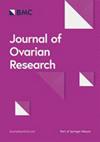The association between triglyceride glucose-body Mass Index and in vitro fertilization outcomes in women with polycystic ovary syndrome: a cohort study
IF 3.8
3区 医学
Q1 REPRODUCTIVE BIOLOGY
引用次数: 0
Abstract
Polycystic Ovary Syndrome (PCOS) is a common reproductive disorder that frequently affects fertility. The TyG-BMI (Triglyceride glucose-body mass) index is a newly explored parameter that may be linked to reproductive results in individuals with PCOS. Nevertheless, its connection with outcomes in In Vitro Fertilization (IVF) procedures remains uncertain. This study included a total of 966 females who underwent IVF treatments for PCOS. At the baseline, the participants were categorized into four groups according to the quartiles of TyG-BMI measured prior to oocyte retrieval. Subsequently, the study compared the differences in clinical and laboratory outcomes among these four groups. Patients in higher TyG-BMI quartiles exhibited a decreased number of retrieved oocytes, 2PN embryos, and available/high-quality embryos (P < 0.05 for Q1-Q4). Additionally, the multivariable regression analysis revealed that individuals in the top quartile of TyG-BMI had a lower count of accessible embryos (β = -0.224, P = 0.257) and a decreased number of high-quality embryos (β = -0.352, P = 0.028) in comparison to those in the lowest quartile. Nevertheless, there were no notable variances detected in the rates of pregnancy or live births among these quartiles. Furthermore, a linear correlation was noted between the TyG-BMI index and the quantity of accessible embryos (P-non-linear = 0.6, P-overall < 0.001), along with high-quality embryos (P-nonlinear = 0.026, P-overall = 0.006). In contrast, there was no notable linear correlation found between the TyG-BMI index and the available embryo rate (P-nonlinear = 0.60, P-overall = 0.8). The results of this research emphasize the notable correlation between TyG-BMI and IVF results in females diagnosed with PCOS. The interplay of insulin resistance and disorders of lipid metabolism may indeed play a pivotal role in influencing the assisted reproductive outcomes of patients with PCOS. Considering these findings, TyG-BMI proves to be a valuable indicator for exploring this potential association.多囊卵巢综合征妇女的甘油三酯-葡萄糖-体重指数与体外受精结果之间的关系:一项队列研究
多囊卵巢综合症(PCOS)是一种常见的生殖系统疾病,经常影响生育能力。TyG-BMI(甘油三酯葡萄糖-体重)指数是一个新探索的参数,可能与多囊卵巢综合症患者的生殖结果有关。然而,它与体外受精(IVF)手术结果的关系仍不确定。这项研究共纳入了 966 名因多囊卵巢综合症而接受体外受精治疗的女性。在基线期,参与者根据取卵前测量的 TyG-BMI 四分位数被分为四组。随后,研究比较了这四组患者在临床和实验室结果上的差异。TyG-BMI四分位数较高的患者取回的卵母细胞数、2PN胚胎数和可用/优质胚胎数均减少(Q1-Q4的P < 0.05)。此外,多变量回归分析显示,与最低四分位数的个体相比,TyG-BMI 最高四分位数的个体可获得的胚胎数量较少(β = -0.224,P = 0.257),优质胚胎数量较少(β = -0.352,P = 0.028)。不过,这些四分位数之间的怀孕率或活产率没有明显差异。此外,TyG-BMI 指数与可获得的胚胎数量(P-非线性 = 0.6,P-总体 < 0.001)以及高质量胚胎(P-非线性 = 0.026,P-总体 = 0.006)之间存在线性相关。相比之下,TyG-BMI 指数与可用胚胎率之间没有明显的线性相关(P-非线性 = 0.60,P-总体 = 0.8)。该研究结果强调了TyG-BMI指数与多囊卵巢综合症女性试管婴儿结果之间的显著相关性。胰岛素抵抗和脂质代谢紊乱的相互作用确实可能对多囊卵巢综合征患者的辅助生殖结果产生关键影响。考虑到这些发现,TyG-BMI 被证明是探索这种潜在关联的一个有价值的指标。
本文章由计算机程序翻译,如有差异,请以英文原文为准。
求助全文
约1分钟内获得全文
求助全文
来源期刊

Journal of Ovarian Research
REPRODUCTIVE BIOLOGY-
CiteScore
6.20
自引率
2.50%
发文量
125
审稿时长
>12 weeks
期刊介绍:
Journal of Ovarian Research is an open access, peer reviewed, online journal that aims to provide a forum for high-quality basic and clinical research on ovarian function, abnormalities, and cancer. The journal focuses on research that provides new insights into ovarian functions as well as prevention and treatment of diseases afflicting the organ.
Topical areas include, but are not restricted to:
Ovary development, hormone secretion and regulation
Follicle growth and ovulation
Infertility and Polycystic ovarian syndrome
Regulation of pituitary and other biological functions by ovarian hormones
Ovarian cancer, its prevention, diagnosis and treatment
Drug development and screening
Role of stem cells in ovary development and function.
 求助内容:
求助内容: 应助结果提醒方式:
应助结果提醒方式:


